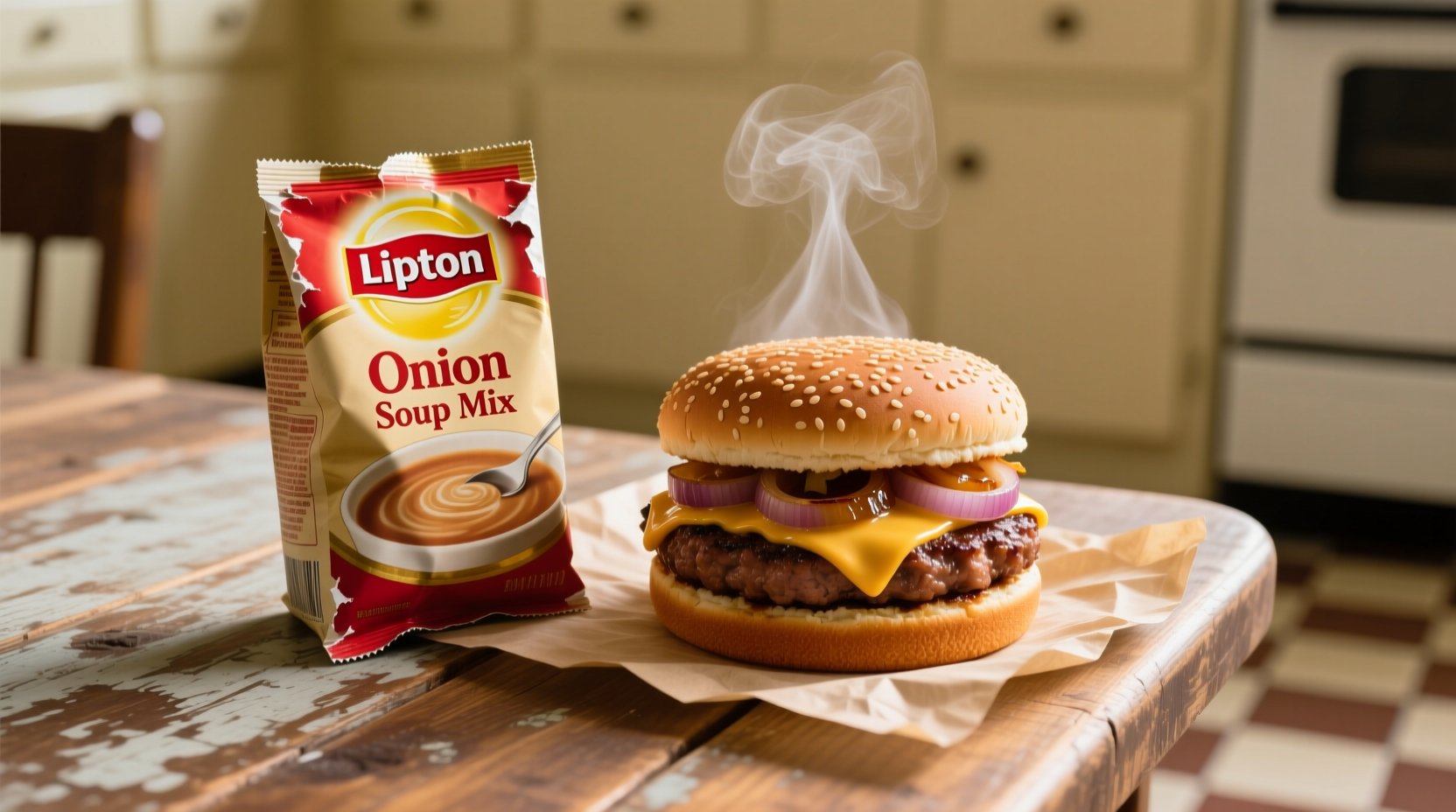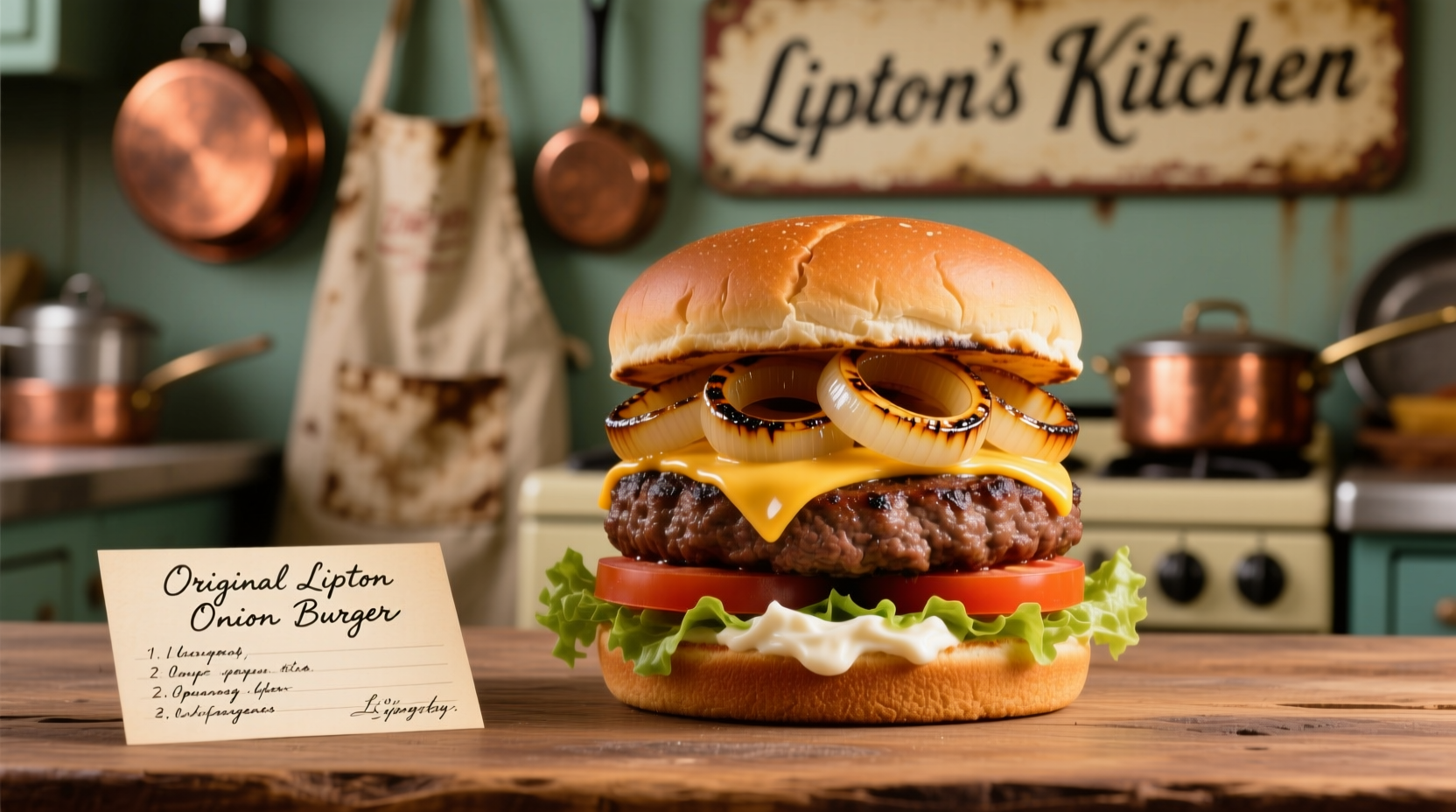The Story Behind America's Favorite Shortcut Burger
For decades, home cooks have relied on the Lipton onion soup mix burger recipe as their go-to weeknight dinner solution. But what makes this simple recipe so enduringly popular? The answer lies in its perfect balance of convenience and flavor enhancement that revolutionized home cooking in the mid-20th century.
From Soup Mix to Burger Sensation: A Culinary Timeline
Lipton introduced its dehydrated onion soup mix in 1954, initially marketed as a convenient base for soups and gravies. By the late 1950s, home economists and clever home cooks discovered its transformative effect on ground beef. The original recipe appeared on Lipton packaging by 1960, featuring just three ingredients: ground beef, the soup mix packet, and water.
This innovation arrived during America's post-war convenience food boom when time-pressed homemakers sought reliable shortcuts without sacrificing flavor. The recipe spread through community cookbooks, women's magazines, and word of mouth, becoming a staple at family gatherings and church potlucks across the country.

Why This Recipe Works: The Science of Flavor
The magic of the original Lipton onion burger recipe isn't just nostalgia—it's food science. The soup mix contains:
- Dehydrated onions (providing concentrated flavor)
- Maltodextrin (enhancing browning and texture)
- Hydrolyzed soy protein (boosting umami)
- Beef fat (adding moisture and richness)
- Spice blend (creating complex flavor layers)
When combined with ground beef, these ingredients work synergistically. The dehydrated onions rehydrate during cooking, releasing sugars that caramelize beautifully. The maltodextrin helps form a flavorful crust while preventing the burgers from becoming dry—a common problem with leaner beef blends.
Authentic Recipe: Preserving the Original Method
Many modern variations have emerged, but the true original Lipton onion burger recipe remains beautifully simple:
- Combine 1 pound (80% lean) ground beef, 1 packet Lipton Recipe Secrets Onion Soup Mix, and 1/4 cup water in a bowl
- Gently mix with hands until just combined (overmixing creates tough burgers)
- Form into 4 equal patties, making a slight indentation in the center of each
- Grill or pan-fry over medium-high heat for 4-5 minutes per side
- Serve on toasted buns with your favorite toppings
Pro Tip: The water is crucial—it helps distribute the seasoning evenly and maintains moisture during cooking. Skip this step and you'll end up with dry, unevenly seasoned burgers.
| Original Recipe (1960s) | Common Modern Variations | Impact on Final Result |
|---|---|---|
| 1 packet soup mix per pound beef | Half packet for "less salty" version | Reduced flavor complexity, less caramelization |
| 80% lean ground beef | 90% or leaner beef | Drier burgers, less rich flavor |
| 1/4 cup water added | Water omitted | Uneven seasoning, tougher texture |
| No additional seasonings | Added Worcestershire, garlic, etc. | Alters signature flavor profile |
Perfecting Your Technique: Professional Tips
While the recipe is straightforward, these professional techniques ensure restaurant-quality results every time:
- Temperature matters: Keep ingredients cold until mixing to prevent fat from melting prematurely
- Don't overwork: Mix just until combined—excessive handling makes burgers dense
- Indentation is key: The center dimple prevents burgers from puffing up during cooking
- Resist pressing: Never smash burgers on the grill—this squeezes out precious juices
- Rest before serving: Let burgers rest 3-5 minutes after cooking for juicier results
When to Stick With Tradition
While culinary creativity has its place, the original Lipton onion burger recipe shines in specific scenarios:
- Weeknight dinners when time is limited
- Cookouts where consistent results matter with large groups
- When using lower-quality ground beef that needs flavor enhancement
- For nostalgic family meals connecting generations
The recipe's genius lies in its reliability—it delivers consistently good results even for novice cooks, which explains its decades-long popularity. Food historians note that during economic downturns, this recipe sees resurgences as families seek affordable, satisfying meals.
Preserving Culinary Heritage
This simple recipe represents an important chapter in American food history—the era when processed ingredients met home cooking to create accessible, reliable meals. While contemporary food culture often dismisses such shortcuts, the original Lipton onion burger recipe deserves recognition for democratizing flavorful cooking for millions of home cooks.
By understanding and preserving the authentic method, we honor both culinary innovation and the practical needs of home cooks across generations. Whether you're making these burgers for the first time or the hundredth, respecting the original proportions and technique ensures you experience why this recipe became an American classic.











 浙公网安备
33010002000092号
浙公网安备
33010002000092号 浙B2-20120091-4
浙B2-20120091-4